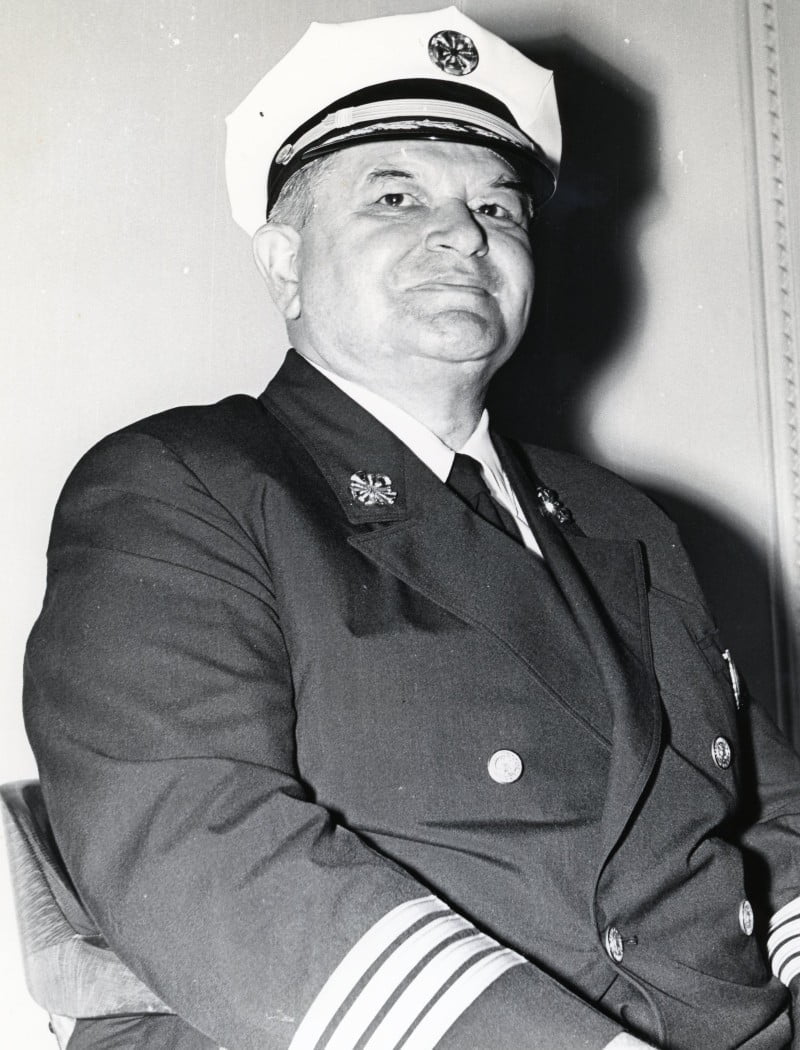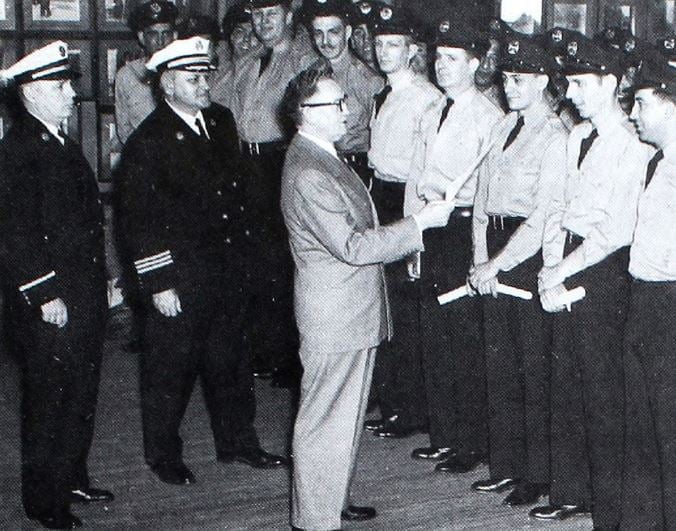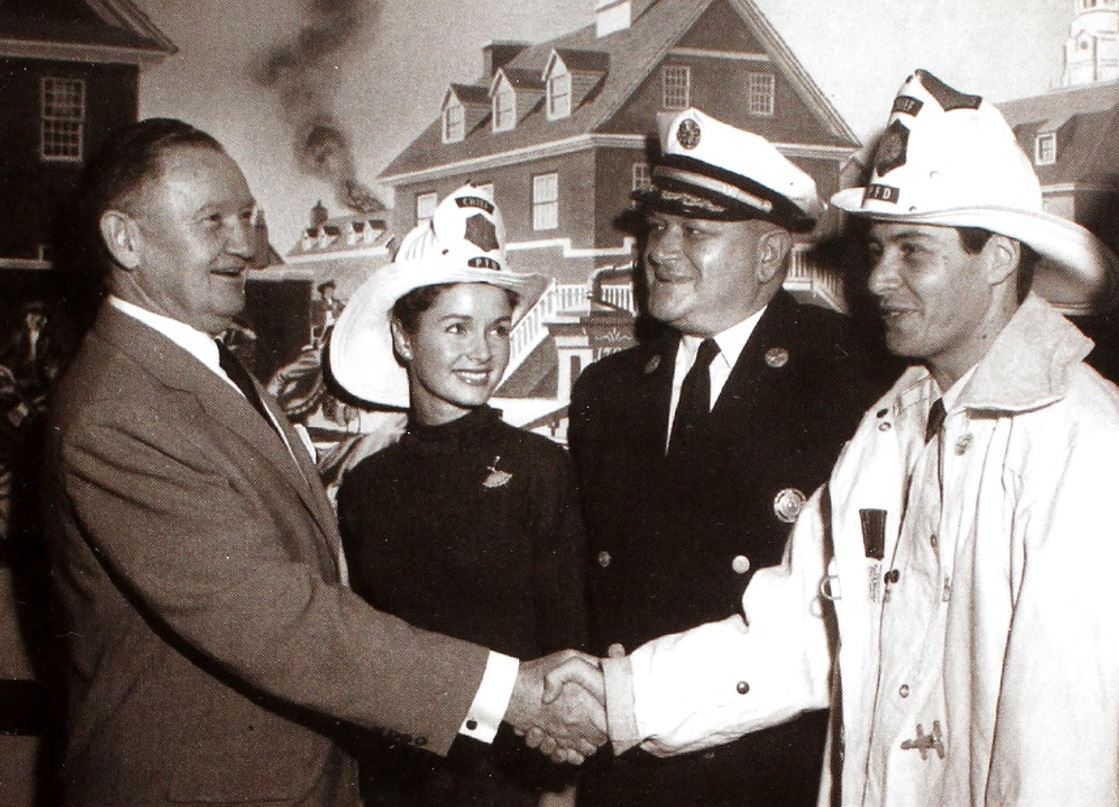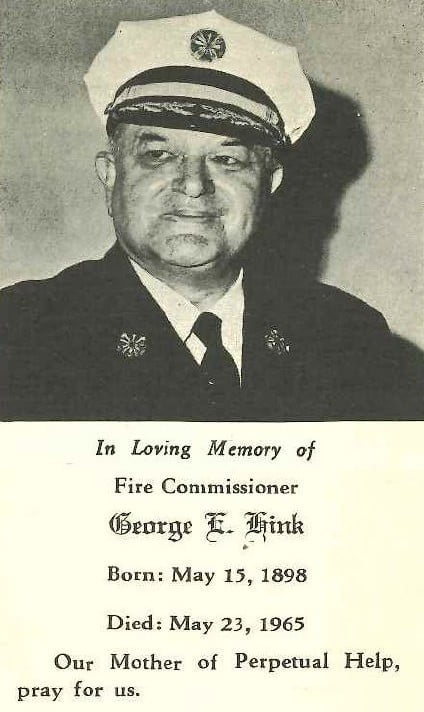
Commissioner George Hink

Commissioner McNamee and Chief George Hink at Fire School graduation April 4, 1952

Debbie Reynolds and Eddie Fisher with Chief Hink – April 21, 1957

Commissioner George E. Hink
Born: May 15, 1898
Died: May 23, 1965, Philadelphia, PA
George Hink joined the fire department on August 16, 1921 as a hoseman. He graduated second in his class from the Fire Training School in the 42nd training class. But his involvement with the fire service started long before 1921. As a young boy he would hang around Engine 42’s station house at Front and Westmoreland Streets. When the company would return from a call he would walk the horses around so they could cool off.
George Hink rose steadily through the ranks being promoted to Lieutenant in 1927, Captain in 1931, Battalion Chief in 1940, Acting Deputy Chief in 1942 and Permanent Deputy Chief in 1947. In 1952, he was named Deputy Chief of the Department, and in 1964 Chief Hink was appointed Fire Commissioner.
While coming up through the ranks he was awarded the Civilian Safety Award from Mayor Moore in 1924, and Letters of Commendation from the Chief of the Department in 1926, 1937, and 1942. While he was Deputy Chief of the Department he won many awards too numerous to list here. Many were for his work in fire prevention.
Deputy Chief Hink worked with Commissioner McNamee in instituting the award winning fire prevention program which brought the Philadelphia Fire Department world acclaim. This program used radio and TV programs, along with in-school programs to spread the importance of preventing fires. Chief Hink (as he would rather be called) believed in the science of firefighting. He instituted the use of foam and Purple K, a powder used to combat flammable liquid fires, the use of ‘wet water’ (or light water) for deep seated fires, and high pressure fog for combating dwelling fires. He also believed that firefighters should be trained in all facets of firefighting. Philadelphia was one of the largest ports in the nation at the time. Chief Hink arranged for Philadelphia firefighters to train at the Philadelphia Naval Shipboard Firefighting School. A program that continued for over 40 years, until the Philadelphia Naval Base was closed in September 1996.
Chief Hink always made time to ‘talk to the guys’. He never wanted to forget where he came from. By keeping in touch with the men he felt he could address concerns before they would become big problems. He had a fire alarm in his house and would respond to every fire – two alarms and greater. He was a familiar site on the fire ground. Admired by the firefighters, he was at fire scenes in all kinds of weather. The safety of the men was his primary concern.
Commissioner Hink fell ill in February 1965 and passed away on May 23, 1965 at 11:28pm at his home in the Kensington section of Philadelphia. Shortly after midnight Deputy Commissioner. and good friend. James McCarey went to the communications center in City Hall to announce the death of Commissioner Hink. The announcement was followed by the traditional SEVEN BELLS to bring a fallen firefighter home. He was laid to rest on Friday, May 28 at the St. Dominic’s Church Yard on Frankford Avenue.
In 1946 Commissioner Hink’s son Vic followed in his footsteps and joined the Philadelphia Fire Department. Like his father he rose through the ranks to become a Battalion Chief, retiring in October 1965 due to injury.
An interesting side note: The 123 Fire Training Class was scheduled to graduate on the day of Commissioner Hink’s funeral. The graduation ceremony was canceled in respect.
Total Service in Philadelphia Fire Department
1921 to 1965, 44 years
